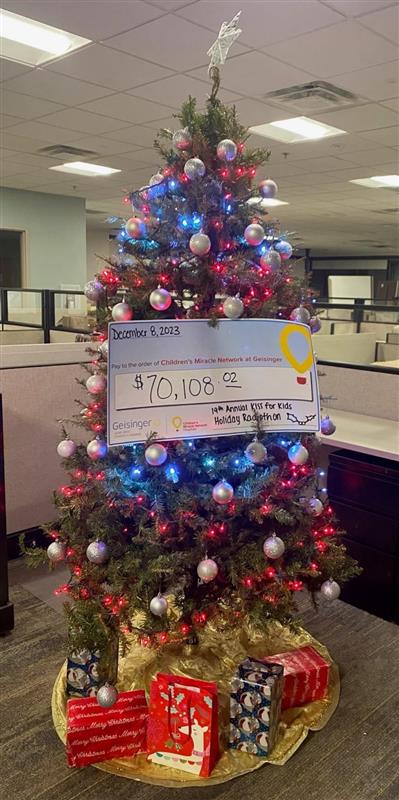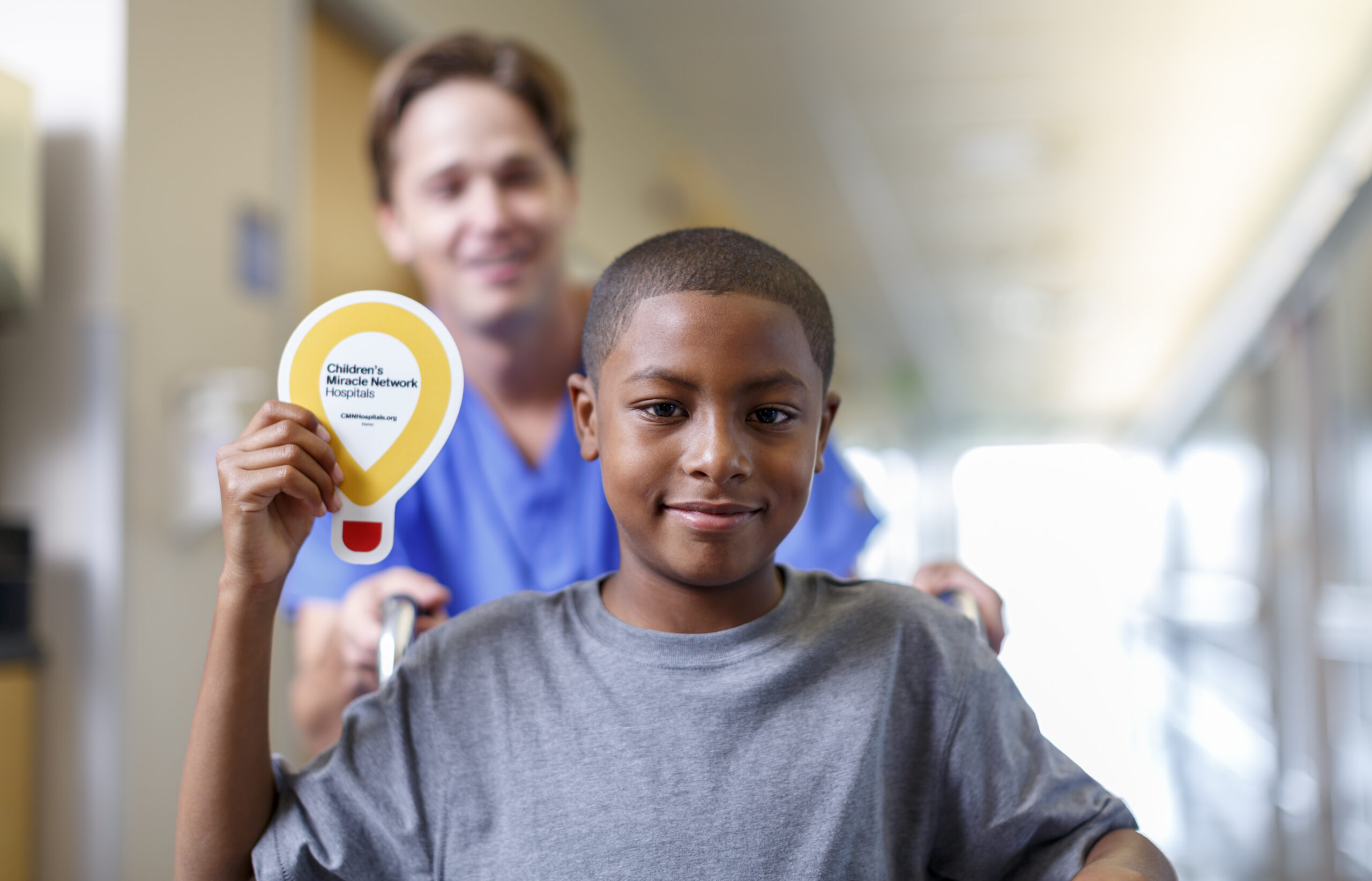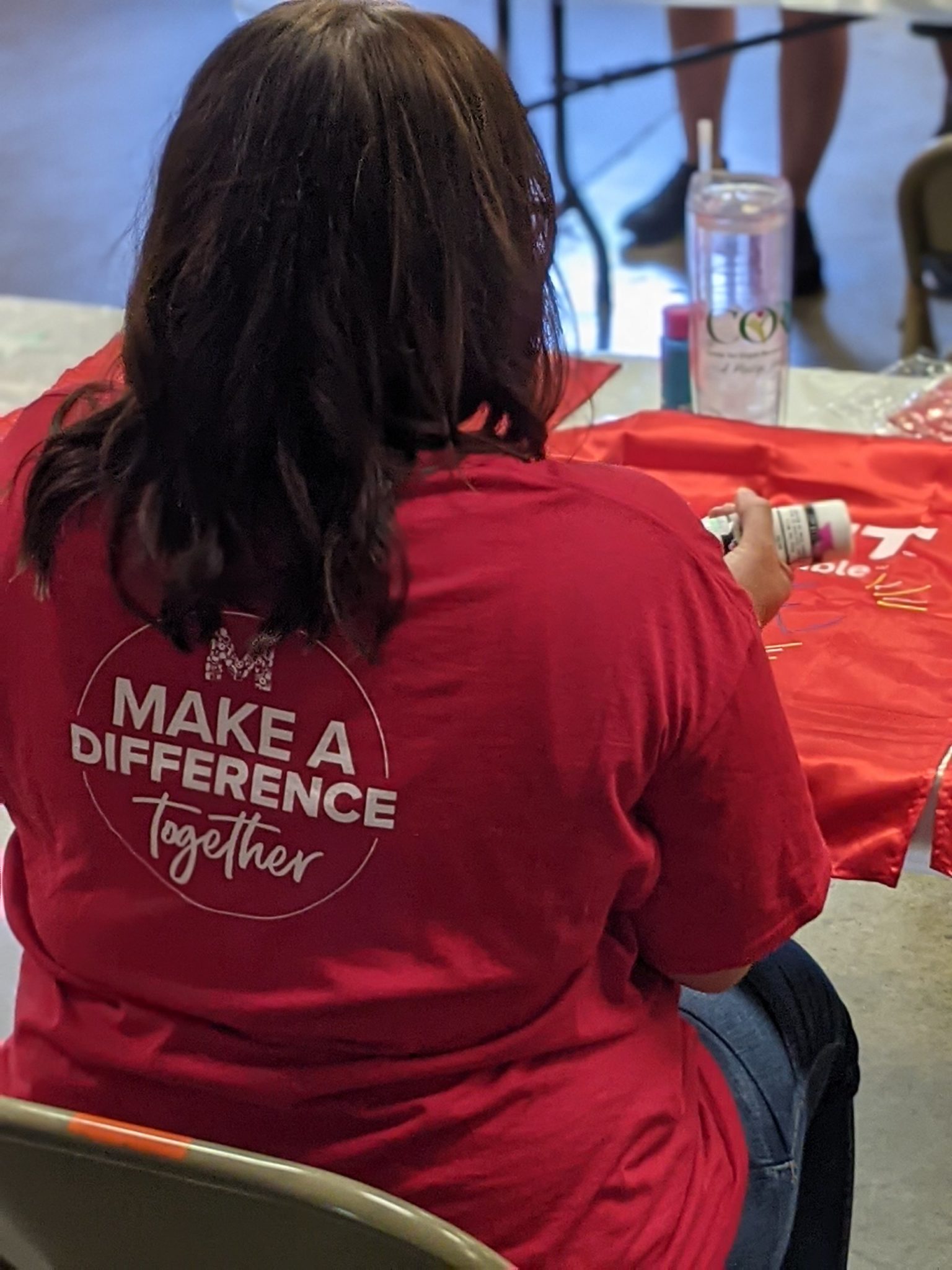TBT: 2012 Miracle Kid Caine Wright

By eight months of age, most babies are reaching their first milestones. First words, crawling, sitting up. For 8-month-old Caine Wright, the first milestone was to overcome cancer.
Before Christmas in 2008, Caine developed an ear infection and had a droopy eyelid and constricted pupil. He was treated with routine antibiotics for the ear infection and his pediatrician said he would monitor Caine’s eye and eyelid. On Christmas Day, the right side of his face turned red.
His parents, Gail and Lance, took him to the local emergency room for a high fever. It turned out that Caine’s ear infection had not cleared up and he was given another antibiotic.
Within a few days Gail noticed that Caine had a large bump near his ear.
“I took him back to his pediatrician for a check up and asked him about the bump and his face turning red,” Gail said. “He sent me right over to a local eye doctor.”
The eye doctor and the pediatrician spoke about Caine’s case and determined that he might have Horner’s Syndrome and that he might have a brain tumor or a chest tumor.
“Our older son, Conner, has seen a neurologist at Geisinger, so our pediatrician called her,” Gail said. “We had am appointment the next day.” Geisinger Pediatric Neurologist and Chief Academic Officer Linda Famiglio M.D. and the team of neurologists examined Caine and ordered an MRI and a CT Scan.
“He had a droopy eyelid on one side and on the other side he had a hard mass right in front of his ear,” Dr. Famiglio said. “The eye didn’t work properly and half of his face was red and not sweating properly.”
The team of neurologists quickly ordered scans and images of Caine.
“We got the pictures and found what we hoped we would not find,” Dr. Famiglio said.
“It was Dec. 30, 2008, at 11:30 p.m. when the doctor came in and told us Caine had neuroblastoma,” Gail said. “I had no idea what she was talking about, between being told the previous day that he could have a brain or chest tumor. I was kind of in a fog. I hadn’t researched anything or looked into anything. Then the doctor explained to me it was cancer.”
Neuroblastoma is the most common cancer in infancy, affecting 650 infants each year in the United States. It most frequently develops in the adrenal glands, but can develop in nerve tissues in the chest, neck, abdomen or pelvis. In Caine’s case, the tumor had developed in his chest, which accounted for some of the problems with nerves controlling his eyes. Doctors also found tumors in front of his ear, on the side of his spine, on the top of his skull and in his femur.
“It was New Year’s Eve, and we asked neurosurgeon Dr. Steven Toms and pediatric oncologist Dr. Jagadeesh Ramadas to come in to offer their opinions on what we should do,” Dr. Famiglio said.
Both specialists made quick plans for the next steps in Caine’s treatment. Dr. Ramdas said Caine’s stage 4, high risk diagnosis created several challenges.
“When Caine presented, the challenges were that he had a 6 by 5 centimeter mass in close relation with the aorta and another blood vessel,” said Ramdas, director of Pediatric Hemotology/Oncology. “This tumor was also going into his spinal column and was in a difficult location for surgical dissection.”
The treatment for neuroblastoma is usually a combined approach, involving surgery and multiple rounds of intense chemotherapy and radiation therapy as needed, according to Dr. Ramdas.
Because of the location of the large tumor and the fact that Caine was only 8 months old, the surgeon needed to be extra careful not to cause permanent injuries or damage.
The surgery was a success and Caine immediately began chemotherapy.
“When you are doing chemotherapy on children less than one year of age, you need to make sure the IV line is in place, vascular access becomes an issue and risk of infection is very high,” Dr. Ramdas said.
Caine did get a couple of infections in his port, one that sent him back to the hospital for a few weeks.
“I was outside planting flowers and I had him out there with me,” Gail said. “Honestly, I was hardly letting him go outside and we were never around anybody. I was trying to keep him from anything and everything, but that day he got a bad infection in his port. We were in the hospital for a couple of weeks for that.”
After finishing his chemo, scans revealed masses on the right side of his skull bone. In September 2009, Caine had the surgery to remove the masses.
“Unfortunately, the surgeons found that the tumor was extending almost into the brain,” Dr. Ramdas said. “So they had to remove that whole portion of skull bone. Because of the extent of the disease and the amount of surgical involvement that was needed, Caine ended up having additional complications with fluid leaking into his ear.”
Caine stayed in the Pediatric Intensive Care Unit for about two weeks and Gail remembers this as one of the most difficult hospitalizations.
“He had to lay flat on his back. He couldn’t move at all,” she said. “He was a year and a half old and had to lie perfectly still.”
But Caine did very well. His skull bone grew back enough to close the surgical area.
“He was so good through all of it, through the chemo, through everything,” Gail said. “I remember sitting in his room and he would be getting chemo and would be sitting there eating mashed potatoes and chicken. It wasn’t even phasing him.”
Caine has been done with his therapy for about 2 ½ years now. He is doing very well and has no limitations.
“If you have met Caine you know, nothing stops Caine,” Dr. Famiglio said. “He is very energetic and has no limitations at all.”
“He has been doing wonderful. You look at him now and other than the scar on the side of his head, you would never ever know anything ever happened to him,” Gail said. “He’s a little wild man.”
Caine’s energy was evident as he played endlessly at the February 2012 Miracle Kid Luncheon. Caine played from the time he walked in the door until it was time to leave and he was not shy about socializing with the other children attending the event.
Gail can’t say enough about the way her children are treated at Janet Weis Children’s Hospital at Geisinger.
“When they tell you your child has cancer, you think your world is coming to an end right then and there,” she said. “When he was diagnosed, Dr. Famiglio had tears in her eyes while telling us. They’re not just doctors, they have a heart too. They care about you and they care about your kids. You can tell.”
Gail keeps a very positive outlook when considering Caine’s early fight with cancer.
“People think I’m weird because I say, ‘Even though we have been through everything we have been through, we are still one of the lucky ones,’” she said. “He was diagnosed at stage 4, high risk, but he has been in remission for more than 2 years. In my heart I know he is going to beat it for the rest of his life.”







